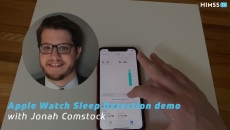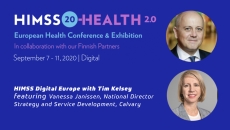Patient Engagement
The task force recommends providers engage in conversations about bills long before the post-discharge account resolution process.
Apple Watch's sleep tracking feature is not just tracking: Apple has designed a whole sleep experience, as HIMSS Media Editor in Chief Jonah Comstock found out.
Vanessa Janissen, national director of strategy and service development at Calvary Health Care in Australia, says the digital health indicator has helped remove care siloes and enabled a more integrated, outcomes-orientated healthcare system.
Solution expands access to on-demand mental health coaching, virtual therapy and virtual psychiatry.
Addresses, dates of birth and Social Security numbers were potentially compromised over a period of more than two years.
Overall, 60% rated the U.S. healthcare system as "poor" or "fair," compared to the 11% that rated it as "excellent."
Patients are largely on board with this paradigm shift, significantly increasing their engagement with the remote care platform.
Its recommendations include lifting limitations on originating sites, allowing telehealth for various types of conditions and reinstating the HIPAA provisions temporarily lifted during the public health emergency.
The plan will make telehealth a foundational modality of care, with the option for patients to follow up with in-person visits if necessary.
A predictive analytics model predicated on phone reminders cut missed appointments significantly, data showed.

